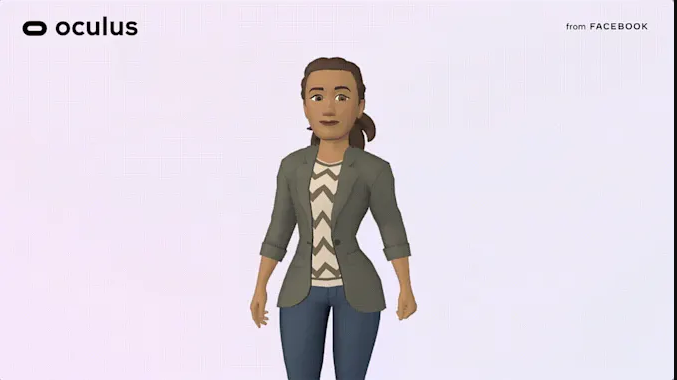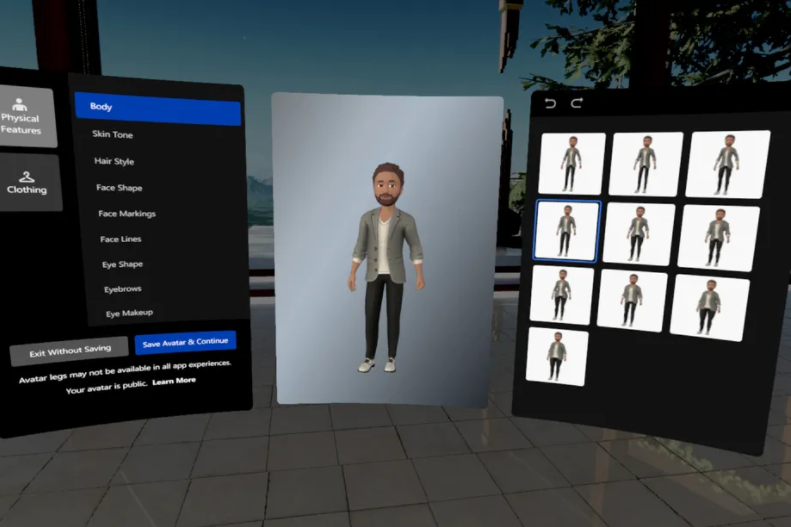Oculus Launches New and More Expressive VR Avatars
Oculus began rolling out its new and redesigned avatars last week. These new and improved avatars are more customizable and more expressive than the ones it launched in 2016 and will give you ample control over your face and body.

Oculus’ new avatar overhaul features greater customizations, especially for the facial features. Users are now able to select the exact eyes, nose, mouth as well as wrinkles for veteran VR enthusiasts. The new avatars will offer even more choices for beards, body types, makeup, clothing, and various other personal touches. According to Oculus, these avatars provide users with a “quintillion” number of combos, and some of these will, no doubt, be a lot subtler.
The avatars are first appearing in a few games for the Oculus Quest VR platform such as PokerStars VR, Epic Roller Coasters, and Topgolf with Pro Putt. The avatars will soon also appear in Synth Riders and later on this year, in ForeVR Bowling.
/cdn.vox-cdn.com/uploads/chorus_asset/file/22464901/ProPutt_2_GIF.gif)
The avatars will have a more natural-looking character movement as a result of the machine learning-based motion prediction.

The new avatars still don’t have a gender toggle or a pre-baked batch of face presets. The avatar editor (see above), instead, allows you to dive into every facial feature, including wrinkles, nose, and makeup. It looks like a glorified RPG character creator. Users will be able to make an avatar just looks just like them. They can also use the editor to create an aspirational avatar that will reflect how the user wants to be seen in the social VR spaces.
Oculus will open its new avatar SDK to all developers by the end of this year. These VR avatar personas will also be supported in Facebook’s large social VR playground Facebook Horizon. However, the games are just a single use-case for Oculus’ refreshed avatars. According to the company, the avatars created by users will ultimately appear in the Facebook app, Messenger, Instagram and other portals in one format or the other should the user choose to have them there. Oculus didn’t provide any details on how the avatars will appear on those other portals or when they are likely to appear. Oculus’ product manager for avatars Mike Howard told The Verge that the company is at “the start of a long journey” as far as avatar use is concerned.
Avatars first appeared on the Oculus Rift platform way back in 2016 as “monochrome busts with floating hands.” According to Howard, the earliest avatars on the platform had eyewear as they weren’t attempting to simulate realistic facial features such as the user’s eyes. Back then, the biggest breakthrough in the avatar rendition was the hand movement as Oculus had just launched the Touch controllers for its Rift platform.
The design of Oculus’ newest avatars builds on the lessons learned from the now-defunct Facebook Spaces as well as the Horizon experience which is still in an invite-only beta. Both of these platforms utilized a more welcoming and cartoony look instead of the more realistic Expressive Avatars that Oculus first showcased back in 2018.
According to Howard, the design of Oculus’ newest avatars is more orientated towards delight and feature attributes from animation techniques. They still have somewhat exaggerated expressions and they still look like harmless Memoji. Overall, they look cute.
They might look unassuming but in creating these avatars, Oculus studied various behavioral traits such as how often people blink as well as the speed at which people’s eyes shift around when they are looking at points of interest. The learnings from these studies have helped make these avatars more grounded in reality. They have helped create a more compelling eye gaze in spite of the fact that the current Oculus VR headsets do not track what a wearer’s eyes are doing. The next generation of Oculus headsets might, however, offer eye-tracking. In a recent interview with The Information, Mark Zuckerberg stated that he was excited about getting eye tracking and face tracking in the future versions of the company’s headsets. Zuckerberg said that for social presence, the device must have all the sensors “to really kind of animate realistic avatars” to enable users to communicate almost realistically.
For a more realistic movement for the rest of the body, Oculus is relying on machine learning to make the arm and head movements appear less stilted. Oculus trained a prediction model capable of guessing a user’s shoulder and elbow positions based on the location of the headset and Touch controllers.
To create a new avatar within the Oculus Quest and Quest 2 headsets, simply click on your profile. If you are using a Rift headset that is connected to a PC that is connected to a PC, you will find the new avatar editor inside the floating row of navigation buttons close to the bottom of your field of view.
Oculus has promised users a more “unified” experience as well and the avatars will pop up in a lot more places. Later in 2021, they will be available in various other VR projects including Facebook Horizon.
Although the expanded avatars might look like simple additions, they could usher in wider adoption of both the Oculus Quest 2 headset as well as Facebook’s virtual reality platforms. If users feel that they are better represented in virtual reality, they are more likely to embrace the technology. This will be especially true for experiences such as Horizon as well as various other social VR apps where a user’s digital persona plays an important role in the overall user experience.
https://virtualrealitytimes.com/2021/04/24/oculus-launches-new-and-more-expressive-vr-avatars/TechnologyOculus began rolling out its new and redesigned avatars last week. These new and improved avatars are more customizable and more expressive than the ones it launched in 2016 and will give you ample control over your face and body. Oculus’ new avatar overhaul features greater customizations, especially for the...Sam OchanjiSam Ochanji[email protected]EditorVirtual Reality Times - Metaverse & VR
